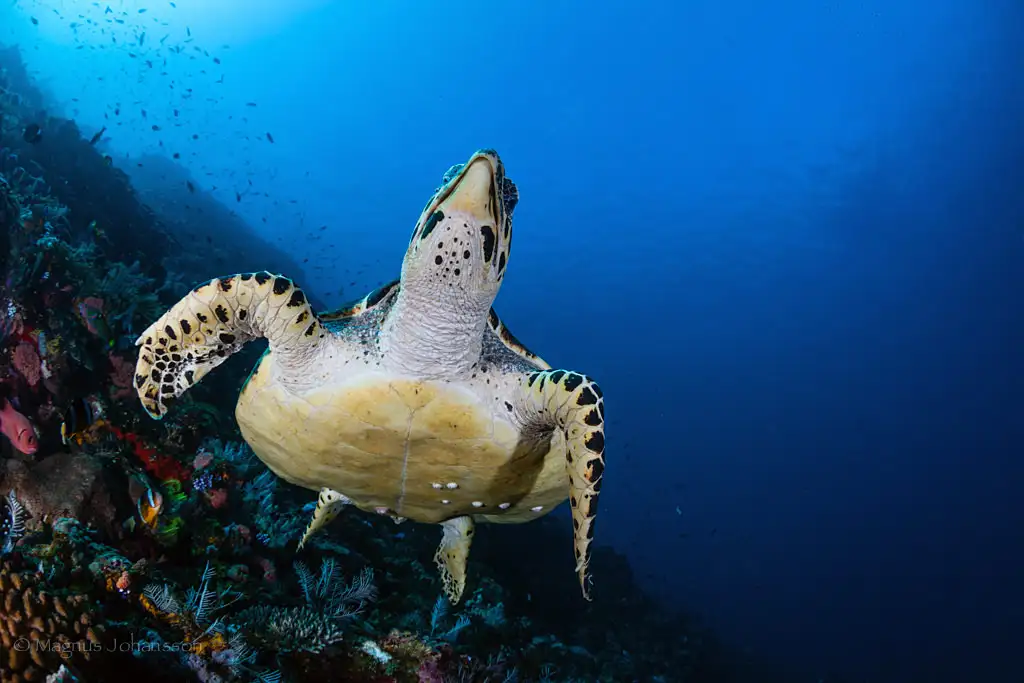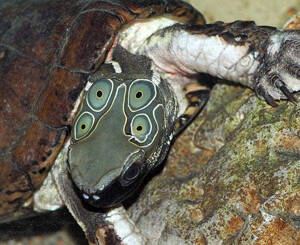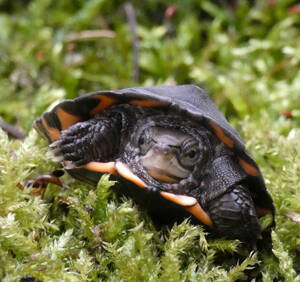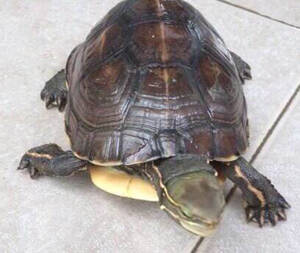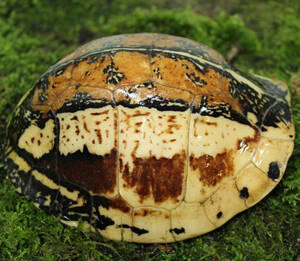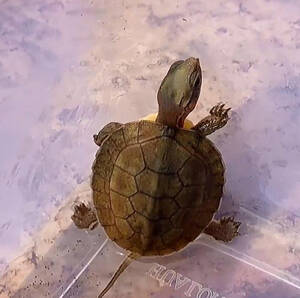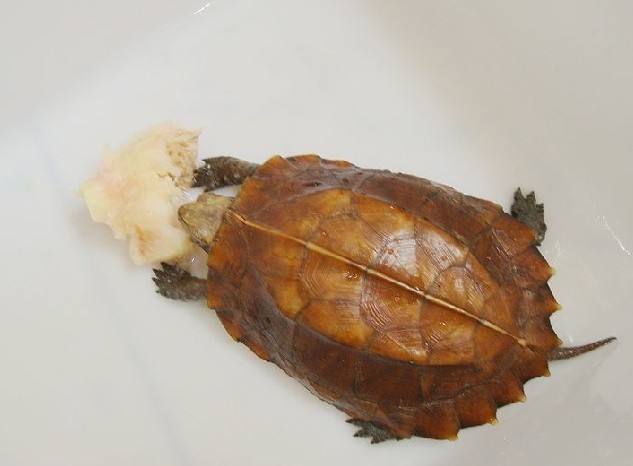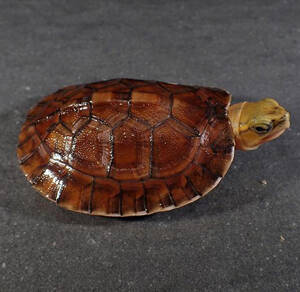Platysternon megacephalum
IUCN
LCBasic Information
Scientific classification
- name:Platysternon megacephalum
- Scientific Name:Platysternon megacephalum,Big-headed Turtle,Hawk-billed turtle, big-headed flat-chested turtle, eagle turtle, etc
- Outline:Testudines
- Family:Terrapin Platychidae Platychys
Vital signs
- length:12-30cm
- Weight:250-350g
- lifetime:30-40years
Feature
The body is flat, the head is large, and it cannot be shrunk into the shell.
Distribution and Habitat
It is distributed in China, Laos, Myanmar, Thailand and Vietnam. In China, it is distributed in Jiangsu, Zhejiang (Hangzhou, Dongyang, Quzhou, Longyou, Sanmen, Tianxi, Lishui, Jinyun), Anhui (Guangde, Ningguo, Jixi, Tunxi, Xiuning, Shexian, Yixian, Qimen, Shitai, Qingyang, Nanling, Jingde, Taiping, Dongzhi, Langxi, Xuancheng, Hainan), Fujian, Jiangxi, Hunan, Hong Kong, Guangdong, Hainan, Guangxi, Guizhou and Yunnan District; It is distributed all over Guangxi, with many in Baise, Nanning, Hechi and other places.
It lives in dark and damp places such as mountain streams, streams, rocks, crevices, and caves.
Appearance
The head is large, triangular in shape, the back covers the whole shield, both the upper and lower hook curve, the upper beak is olecranoid, the neck is short, the head can not be retracted into the carapace. The dorsal nail is slightly oblong, flat, with a concave leading edge, and the posterior edge is not serrated. The whole body is tan, brownish black or dark brown, scattered with small irregular black spots. The juvenile body color is bright and gradually deepens with age.
Details
Flat chest turtle like Yin fear of high temperature, fierce temperament, rock climbing and tree climbing ability is very strong. It lives mainly in the clear streams of the mountains. It also appears in swamps, pools, rivers and fields, generally at night, can climb stone walls or trees, and can climb walls and branches larger than their own length through the support of the tail. According to the indoor feeding observation found that: during the day more lurking in the pool water, to dusk began to activity, sometimes climb out of the pool to the sand activities. Field observation found that it is more common at dusk and early morning. We hypothesize that during the day, it may be lurking under streams or rocks.
< img SRC = "/ static/upload/images / 20220922/1663836707191338. JPG" title = "1663836707191338 JPG" Alt = "1 (1) _ nine ray image converter. JPG" / >
The flat-chested turtle is a typical carnivorous animal; In the wild, mainly prey on snails, earthworms, small fish, snails, shrimp, frogs, etc., but also eat dead fish and shrimp and animal viscera, do not eat plant feed; Indoor feeding, can also feed eel, loach, small crustaceans, rat meat, pork, and other turtle meat; It is non-selective in feeding time, prefers to eat in water, relies on its front PAWS and strong jaw to tear food, and swallows it with the help of its front PAWS.
Around November every year, when the water temperature drops below 10 ° C, it enters hibernation, and it can only wake up when the water temperature rises to about 15 ° C the following year. If this turtle is raised in captivity, it should be fattened before hibernation, because its ability to withstand starvation is worse than that of ordinary turtles (according to breeding observations, if the active season is not fed for about 1 month, it will die). The flat chest turtles raised indoors mostly hibernate in the pool; In the wild, most of them hibernate in stone caves with water flow.
The flat-chested turtle is the most ferocious of the domestic freshwater turtles, and unlike the passive defense of other turtles, flat-chested turtles often take the initiative to attack. When threatened, the eyes are wide open, the mouth hisses, the mouth wants to bite, and once caught, the claws scratch the mouth and bite, the tail whips left and right, and violently resist. The flat-chested turtle has long claws and long legs, and the crawling speed is very fast, 7 to 8 meters per minute. Swimming ability is also very strong, in the surface of the water, the tail end turned up, the limbs stroke, swimming freely.
< img SRC = "/ static/upload/images / 20220922/1663836715127519. JPG" title = "1663836715127519 JPG" Alt = "2 _ nine ray image converter. JPG" / >
The natural resources of the wild flat chest turtle are extremely scarce, but there are no specific effective protection measures. However, there have been some initial successes in domestication and breeding techniques, with a small number of animals raised for viewing in zoos and private individuals, and sold at farmers' markets.
Due to the decline in environmental quality, habitat destruction, indiscriminate hunting and killing, the amount of wild natural resources is decreasing. Markets are also hard to come by (and if they are imported from outside China), and combined with human predation habits, it is estimated that mature individuals in the wild will continue to decrease.
Protection advice
Strengthen publicity and education, so that the public understand and protect wildlife resources, it is strictly prohibited to capture and sell.
Protect its habitat and breeding environment to ensure its natural proliferation.
Develop artificial breeding and reduce the capture of wild species.

